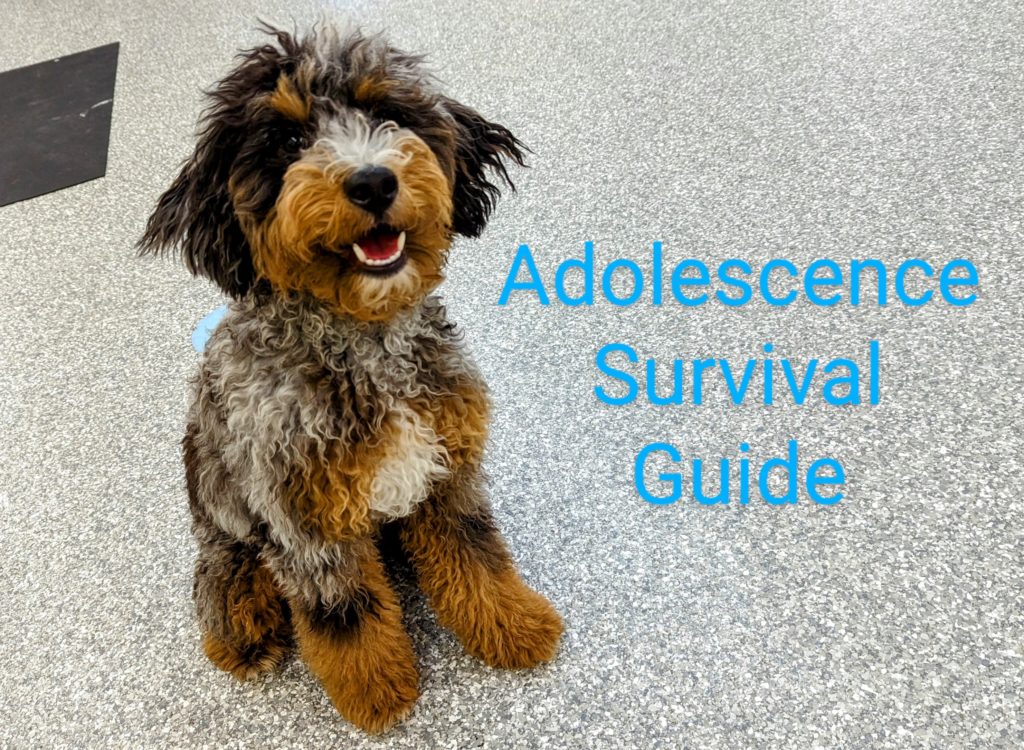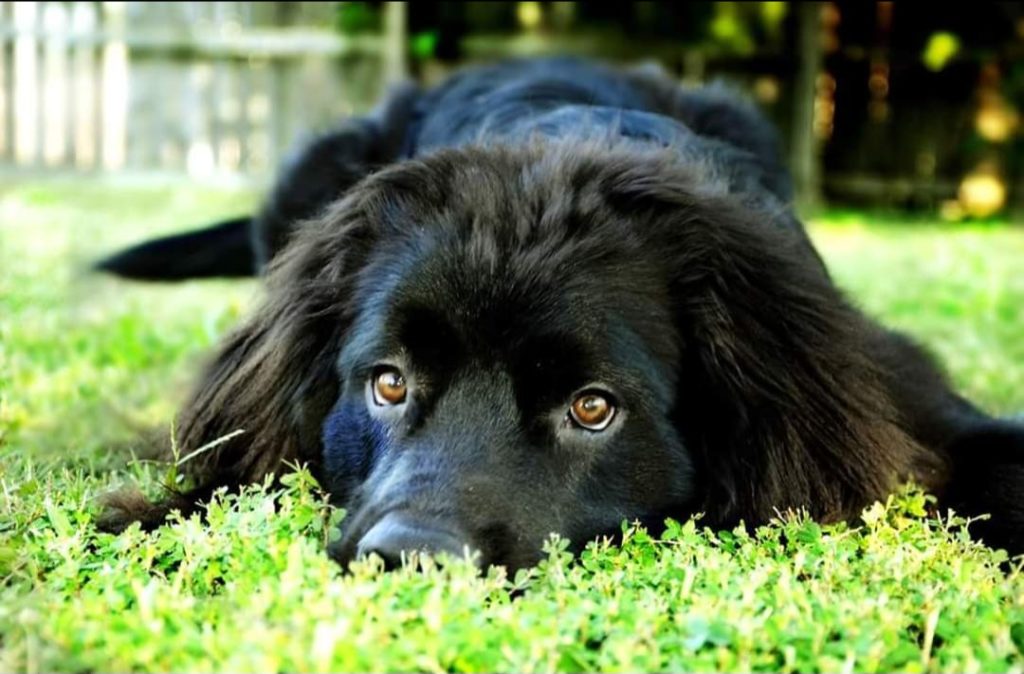
Puppies are great! Adorable little sponges that (typically) want to be near you instead of venturing far away, learn new behaviors fairly quickly, recall pretty well, and seem to learn so much in those first few precious months home.
And then they hit 6 months and something changes. Maybe they’re jumping again (or worse than ever), marking in the house (especially the boys), blowing off cues that were already reliable, generally being far more ornery than they had been before.
Where did your perfect puppy go??!?
The good news is we ALL go through this with our puppies – whether you’re an experienced trainer, a lifelong pet owner, or if you’re on your very first dog.

I remember this period with the first dog I had as an adult, long before I started to understand puppy development. By five months old, he was incredible – recall was pretty good because he never really went very far away from me in most environments, his basic obedience (sit, down, stay, etc) was solid, he was in many ways an excellent puppy (not that he didn’t have some issues of his own, he was a puppy after all!). Then one day I asked for a sit in the quiet calm house and he just…didn’t do it. Asked again, still nothing. I remember getting so frustrated because “he knows this!!”. After I took a step back and got past the frustration, I went back and retrained the sit a few times and he was fine after that but I’ll never forget that initial frustration from not understanding why he was suddenly not doing behaviors he’d known before.
Welcome to the joys of adolescence! You have a middle schooler that’s just now realized there’s a whole wide world out there with all sorts of interesting sights, sounds, and smells. How can they possibly come or sit when there’s a brand-new smell RIGHT THERE that they’ve never truly smelled before?
You might hate the answer but there’s only one tried and true way to get through it:
Consistent training and being flexible with your expectations as your pup rebuilds their repertoire amongst all the distractions they’ve just awoken to. Bump up your rates of reinforcement (more praise, more treats, more toy rewards, whatever your dog works best for) and really consistently pay for the behaviors you want to see.
If they had the behaviors as a younger puppy, they’ll remember faster so it won’t take as long as it took to train the behaviors in the first place. You just have to remind them what they’re supposed to do but you should be prepared to go back to phase one and help them remember when needed.
Really focus on going back to foundations and rebuilding behavior any time you see them struggle. These quick reminders of the basic building blocks will make a huge difference in their long-term behavior. Be very careful to monitor your frustration as well. It’s very easy to get stuck in the “but they know better” mindset and while they may have known better their little brains just aren’t capable of processing and choosing to do better on their own during this developmental period, so we have to help them.
If they’ve started jumping more intensely, go back to treating them like a new puppy and really emphasize paying them for keeping four paws on the floor – whether you choose to do that by preemptively bending down to pet them at their level when you see them coming or you start asking for alternate behaviors like sit when they come up to you for attention – just maintain the consistency in the idea that the only way the pup can get paid is if it stays grounded.
Long lines and high value treats are great for recall – I’ve found that’s one skill that consistently goes out the window at or around 6 months. Start with your dog so close to you they can’t fail (and by that, I mean you should be able to reach their mouth to deliver the treat when you say come). Once they start to remember you can gradually add distance back in – expecting new environments to be harder at first until the recall generalizes to all environments.
If they’ve lost a normal obedience type behavior like sit/down that they had before, just retrain it from the beginning and remind them that it still means the same thing now as it always did. They’ll remember faster than the initial learning took but taking that step back will help them a lot.
Adolescence is not fun for any of us but most importantly – this too shall pass. With consistency on your end, usually somewhere around eight to ten months (give or take some depending on the puppy) adolescent behavior will ease some and you’ll notice them leveling back out to the nice normal puppy you had before.
A few more notes:
Around 8 months old, puppies hit a fear period. They might become scared of mundane things that have never fazed them before, new things will oftentimes be considered threats, and if there’s a traumatic event it really has the power to stick with them for life. Be patient with them during this time and do your best to control the environment until they get through it.
Some bad news, you should expect a second round of adolescent type behavior at approximately 18 months. Good news though, consistency during the first adolescent period will potentially make round two a little easier to get through. After that you’ll be in the clear with a relatively mature adult dog.
Final note: There’s no strict timeline on a puppy’s development. They may hit these markers sooner or later than mentioned but they will go through them at some point. Watching your dog will be your best bet for recognizing the beginning of adolescence. The end is a little trickier to notice, one day you’ll just look up and realize you made it out the other side.
By: Rachel Moseley

Comments are closed